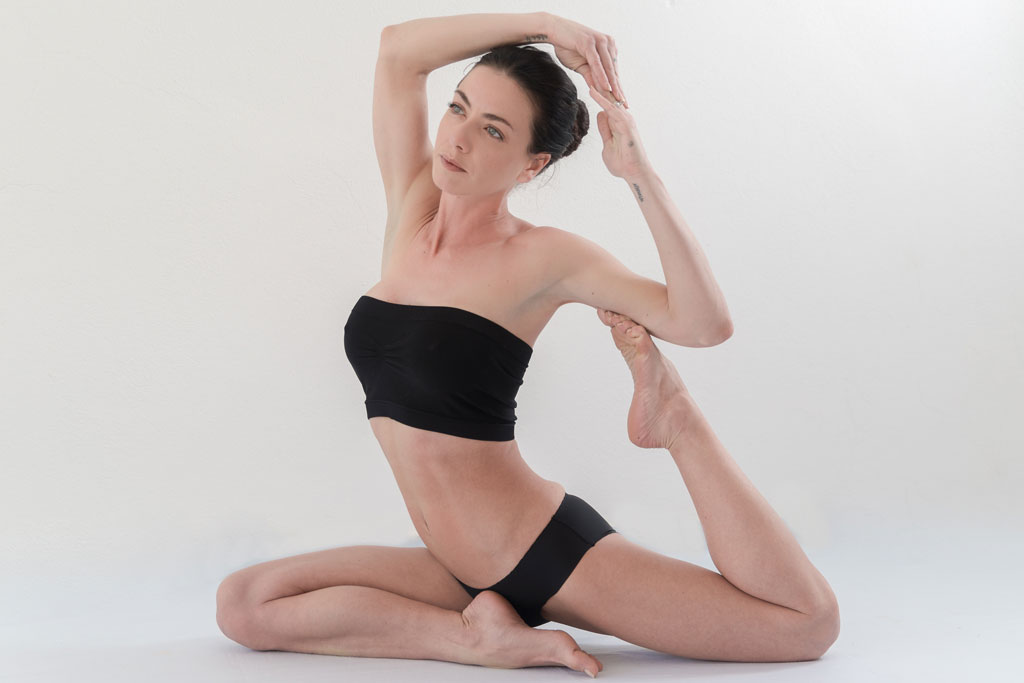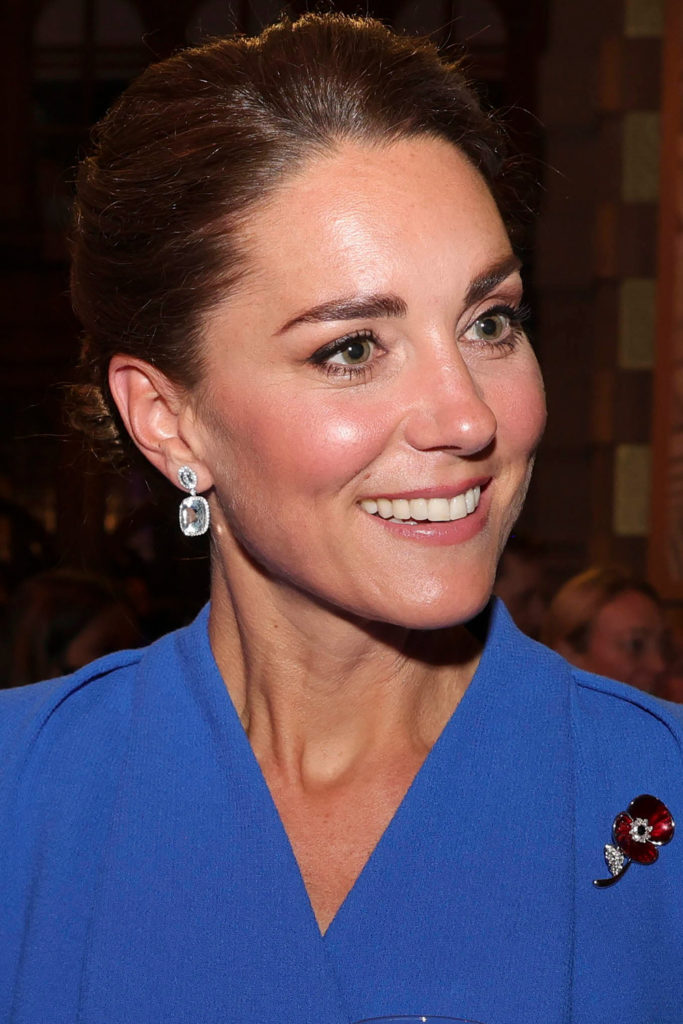Yoga for Wellness: Charlie Stewart-Brown on Chair Yoga, Breathing & Anxiety
By
5 years ago
Tips from the founder of Indiv Yoga

Charlotte, aka Charlie Stewart-Brown is a highly qualified yoga teacher from London who discovered the powers of yoga after suffering from anxiety as a girl. After being recommended to take up yoga and meditation, studying psychology and sociology and completing her RYT200 Teacher Training, Charlie found ways to stay calm in what can sometimes be anxiety-inducing London – yogic breathing exercises, Zen meditation & different styles of yoga. Now, Charlie is renowned for her work in Yoga for Special Needs and Autism, and works with some of the world’s very best yoga practitioners including David Swenson, Shiva Rea, Anne-Marie Newland, Sadhguru and many more. We spoke to Charlie Stewart-Brown about her work and how the rest of us can benefit from the powers of yoga…
Yoga and Breathing for Anxiety
Q&A: Charlie Stewart-Brown on Yoga, Breathing and Anxiety
How closely linked are yoga and breathing practices?
Charlie Stewart-Brown: Simply put, the practice of yoga centres around 3 things: breathing exercises, physical postures and meditation. There are classes that you can go to in India where you do nothing else but sit crossed legged and do different breathing exercises for an hour. Yoga is a practice of overall mental and physical wellbeing and it has recognised the important link between the body, mind and breath for thousands of years. Breathing has a direct impact on your mind and on your body, and is the single most important thing we do. One of the first things you are taught in a yoga class is how to breathe correctly so that your brain and body receive the vital amount of oxygen to function at optimal health. Pranayama, the word used to describe the breath expansion exercises, is a central tenet of yoga and is considered the most important principle of the physical practice of yoga. If you can’t breathe fully then you can’t sit properly in meditation or hold your yoga poses with steadiness and ease.
Yoga purposefully strengthens your respiratory system without making you get out of breath. When I’m teaching children yoga I always ask them the same questions at the beginning of the course: ‘Do you think you could go this entire yoga class without eating any food?’ Yeah, of course, they reply. ‘Do you think you could go this whole yoga class without drinking any water?’ Yes! they all scoff at me. ‘Do you think you could go this whole yoga class without breathing?’ Silence. This helps them to understand how oxygen is the most important ‘food’ we take into our body. Pranayama breathing techniques, teach us how to expand the amount of oxygen we are taking into our lungs, and how to fully expel them of the stale air when we exhale properly. If there is still some stale air left in the bronchioles then there is no way they can fill to the full with oxygen. Therefore we learn how to maximise our breathing so that we are receiving the most amount of oxygen possible to feed our cells, muscles and organs. Without the oxygen they need to function properly, our bodies become weaker, irregular and more susceptible to problems.
Yoga, therefore, teaches us how to optimise our oxygen intake and expel all the CO2 in the lungs, by breathing fully and mindfully. Slower, more gently yoga classes will make you breathe for longer periods of time in one pose, whereas classes with more of a dynamic or flow description, will have you move in and out of poses with your inhales and exhales.
What positive impacts can breathing practices have on your life?
Charlie Stewart-Brown: Yoga teaches you how to breathe fully and pranayama exercises teach you to breathe better. This has fundamental implications on your life mentally, physically, psychologically and emotionally. Oxygen fuels your body on a cellular level, and many diseases and chronic pain are caused by a lack of oxygen in different parts of the body. Breathing correctly optimises the functioning of your body on all levels. When we are not breathing fully our blood vessels constrict as less oxygen is passing through, which makes your heart work harder and can cause problems associated with higher blood pressure and bad circulation. Your airways also tighten which means that the oxygen has to work harder to get around the body at the rate needed. This leads to a lack of energy as your muscles, heart and brain aren’t receiving the amount of oxygen needed for optimal function.
Your body also has less ability to deliver oxygen to cells and has to prioritise survival instead of repair, development and multiplying. Every cell of the body that makes up our muscles, brain, heart, and all other organs, require oxygen to work and repair properly. Tired muscles and a lack of energy cause a slower recovery rate in the body, which also lowers your immune system. Breathing practices are therefore the best ways to achieve better overall health, and it’s free! The positive mental and physical impact of breathing properly are said to be seen after 2 weeks of daily practice.
How can yoga help with anxiety?
Charlie Stewart-Brown: The practice of yoga strengthens the mind/body/breath connections, all of which have a direct impact on one another, and on experiencing anxiety. When your Central Nervous System is not receiving enough oxygen it will result in a tense body, nervousness and stress in the mind. Breathing properly will, therefore, have a positive impact on the nervous and endocrine system, reducing the release of adrenaline and cortisol and the fight-or-flight reactions. The brain uses about 20% of the oxygen that we take in and requires open healthy blood vessels and relaxed muscles to obtain the oxygen needed. If the oxygen can not circulate properly, it can cause problems in all our cognitive functioning, including our thoughts and emotions. Our thoughts and emotions then transmit into negative sensations and reactions in the body, leading to the symptoms of anxiety. Therefore we have a higher susceptibility of feeling frustrated, irritated, insecure and scared.
Yoga also puts a lot of emphasis on correct posture, which teaches us not to hunch our shoulders, look down, or constrict our airways, so that the oxygen can’t flow through the body properly. It, therefore, helps correct the short, shallow breaths we experience with anxiety and helps us breathe in a more relaxed, full and healthier manner. A strong straight spine and a calm focused mind, give us more confidence, resilience and strength to fight anxiety.
Yoga is a mindful practice helping us recognise sensations in the body, tensions and imbalances. It emphasises the importance of relaxation and learning how to identify tension, and reduce it. By reducing tension in the body you have a direct impact on reducing the tension in the mind. Just as by reducing the tension and stresses in your mind, you are directly impacting the tension and stress in the body. The ultimate goal of yoga is to be able to sit comfortably for long periods of meditation, which has an important impact on anxiety. Meditation helps us understand our mind, and strengthens our ability to make it focused and productive, or calm the thoughts and worries when needed. By understanding, and having better control over your mind, you gain better control over your thoughts, emotions and actions. These 3 make up the fateful prism of anxiety because they can have a negative impact on each other. Having a better understanding of, and control over our thoughts, emotions and actions, helps us fight anxiety in a holistic way. After all, the physical symptoms of anxiety are often caused by irrational thoughts, linked to past experiences or unrealistic expectations of the future.
Where to practice yoga in London
Can you tell us about your retreats? Who are they for?
Charlie Stewart-Brown: My retreats are predominantly for adults who suffer from anxiety or find it difficult to handle and control the stress in their lives. They are always set in beautiful, peaceful locations with an environment that encourages relaxing, restoring and re-balancing mind and body. The idea is to have some real me-time, and learn tools and techniques for reducing anxiety and stress in real life. There is usually access to water be it the sea or a private swimming pool, and ample garden and indoor space for people to sit quietly to read, reflect or meditate.
We do a morning class centred around opening the joints, stretching muscles, strengthening the respiratory and cardiovascular organs, and increasing flexibility, strength and balance. Every retreat is a little different as it is tailored to the individuals attending, and their particular strength, limitations and objectives. The evening class is usually restorative yoga and works more on mindfulness, breathing exercises and meditation. All meals are included on the retreats and the menu is specific to the group’s intolerances, allergies, likes and dislikes. Depending on the location the menu is either vegetarian or pescatarian with an emphasis on healthy, natural ingredients. Participants are asked to leave their phones in their rooms and encouraged to only use them for 30 minutes in the evening. When possible we provide organic toiletries, daily room cleaning and there is usually a massage included and an excursion of the local area, like a boat trip.
There are also optional extras ie. golf, tennis, horse riding, and all activities are optional. Therefore participants don’t feel obliged to stick to a schedule or do anything that they don’t feel like doing that day. I am not dogmatic and the environment is non-judgmental and very relaxed. We practice reflective silence in the morning until the first yoga class is over and mix time together with time to be alone. The most important aspect of it for me is not their time on the retreat itself, but teaching participants how to leave the retreat with tools that they can use when back in their normal day to day lives.
7 Wellness Retreats for a New Season Transformation
Can you tell us about ‘chair yoga’?
Charlie Stewart-Brown: Chair Yoga is something that I teach my trainees when giving the Indiv Yoga RYT200 Yoga Teacher Training Courses. This is a Yoga Alliance world-wide recognised certificate enabling them to tailor the different aspects and techniques of yoga, to all types of individuals of different physical and mental limitations and strengths. Chair yoga is particularly good for the elderly and it’s something I came up with when asked to teach yoga at an elderly care facility 9 years ago. I also use it in school settings, for clients in wheelchairs, or simply with those that spend most of their day in a chair or at a desk. Bad posture and tension have a direct effect on breathing poorly, and in turn, a lack of oxygen has negative effects on the body.
From a chair, there are many simple exercises that you can do to make your body systems work better, and ease muscle and joint stiffness. Chair Yoga helps people identify bad posture and imbalances in the body, and teaches them the different movements to correct them. It is also something I teach as a workshop to employees at offices and corporations, for better overall wellbeing. I always explain how good posture and better breathing are fundamental for a healthier life, and how to achieve both from a chair/desk. There are many small things you can do to make your day healthier mentally and physically, and simple stretches and movements to ease daily tension, keep joints and muscles from getting stiff, and encourage better circulation and focus. It’s all about moving, breathing and concentrating mindfully, but from a chair.
What’s one change/practice we could all make or introduce right now for a positive impact?
Charlie Stewart-Brown: Put one hand on your belly and the other on the ribs on one side of your chest. Take a big long inhale through the nose and feel the abdominal and chest cavities expand outwards and to the sides like you’re filling a balloon. Now exhale slowly through the nose feeling them ‘deflate’ until your belly button is as close to your spine and as high up, as possible. Make a habit of doing this type of breathing whenever you feel anxious or remember to do so. If we had to breathe so deeply consciously all the time we’d never get anything else done! However practising it as much as possible will make it become a more natural process, and soon you’ll be breathing deeper and fuller without realising it. And as I’ve mentioned, full breathing is the best thing we can do to ensure optimal physical and mental health!
You can read all the information on Charlie’s retreats at indivyoga.com
10 Things to Do in London This Week







